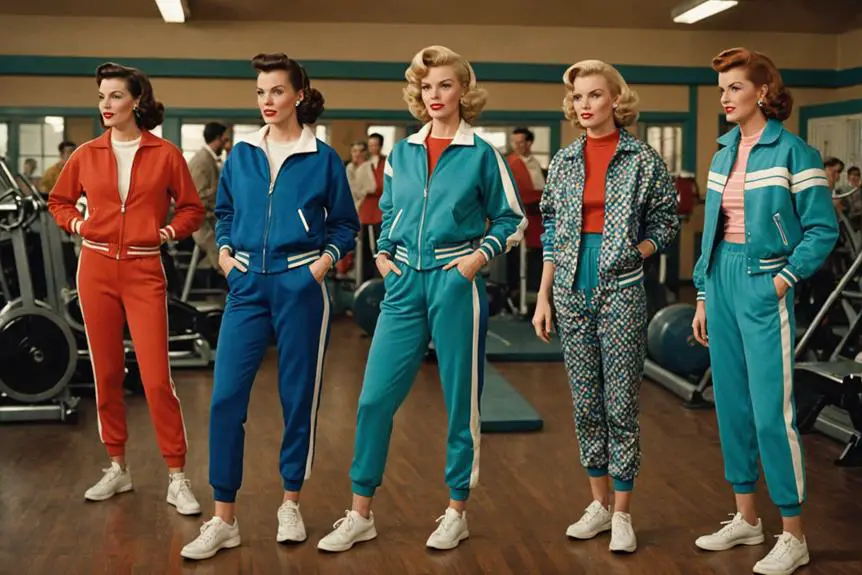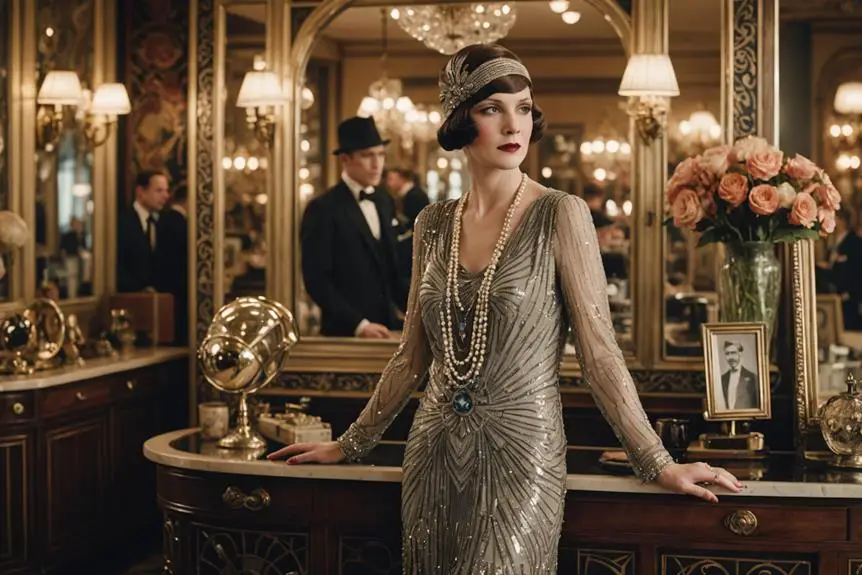In the fabulous 1950s, women's tracksuits were all the rage! As sports became super popular, these comfy outfits helped you move freely while looking stylish. Think loose-fitting designs, high-waisted pants, and zip-up jackets made from lightweight nylon and polyester. With bold colors and playful patterns, tracksuits became must-have leisurewear. They weren't just for athletes! Brands like Adidas were tailoring tracksuits to fit women perfectly, symbolizing a shift in fashion and empowerment. So, whether you were hitting the gym or hanging out, you nailed that sporty chic vibe. Curious about how this trend evolved? There's even more to explore!
Historical Context of Tracksuits
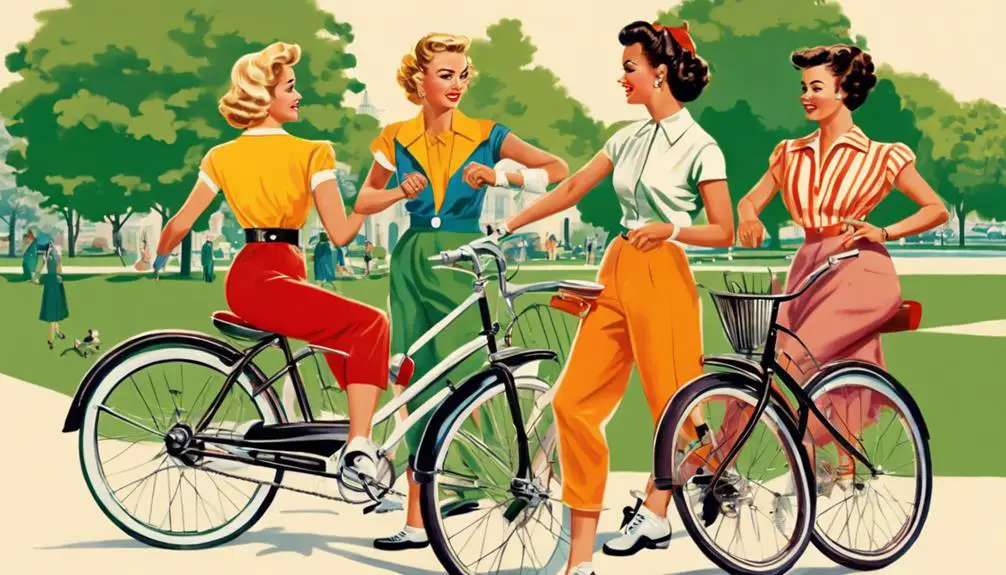
In the 1950s, tracksuits really took off as sports and fitness gained traction, catering to both athletes and those wanting comfortable casual wear. You could see them everywhere, from local gyms to parks, as people embraced a more active lifestyle. With the rise in athleticism and organized sports, the demand for practical athletic clothing skyrocketed. Tracksuits provided the perfect solution, designed for flexibility and freedom of movement—who wouldn't want that?
These outfits usually featured loose-fitting pants and zip-up jackets, crafted from synthetic fabrics like nylon and polyester. You know, those materials that feel like a cozy hug while letting you move without restrictions. At this time, tracksuits weren't about looking stylish; they were all about function. They helped athletes perform better, and let's be real—everyone loves a good cozy outfit!
What's even more exciting is that women's participation in sports started to grow during this era. Suddenly, tracksuits made their way into women's wardrobes, marking a shift toward greater inclusion and representation in athletics. Can you imagine how empowering it must've felt for women to have their own sporty gear?
Design Features of 1950s Tracksuits
Tracksuits in the 1950s showcased a blend of functionality and style, tailored specifically for women who embraced an active lifestyle. You'd love how these outfits were designed with a loose-fitting design that prioritized comfort. The high-waisted pants were perfect for flexibility, allowing you to move freely whether you were jogging, playing tennis, or just hanging out with friends. And let's not forget the zip-up jacket! It was super easy to throw on and off, making it a practical choice for any occasion.
The fabrics used were often synthetic blends, like nylon and polyester, which meant they were durable yet lightweight. Who wouldn't want that? These materials allowed women to enjoy their activities without worrying about their clothes holding them back. Plus, they dried quickly—perfect for those spontaneous outings!
Vibrant fashion trends defined this decade, and tracksuits were no exception. Bold colors and playful patterns were everywhere, making sure you stood out in a crowd. Whether you preferred polka dots or stripes, there was something for everyone. Many designs even emphasized a feminine silhouette, featuring tapered pants and fitted jackets that highlighted your shape while still keeping it casual.
Tracksuits didn't just serve a functional purpose; they became a fashion statement too! You could rock your tracksuit during leisure activities or social outings, feeling confident and stylish. So, are you ready to step back in time and embrace the fabulous flair of 1950s tracksuits?
Popular Brands and Styles
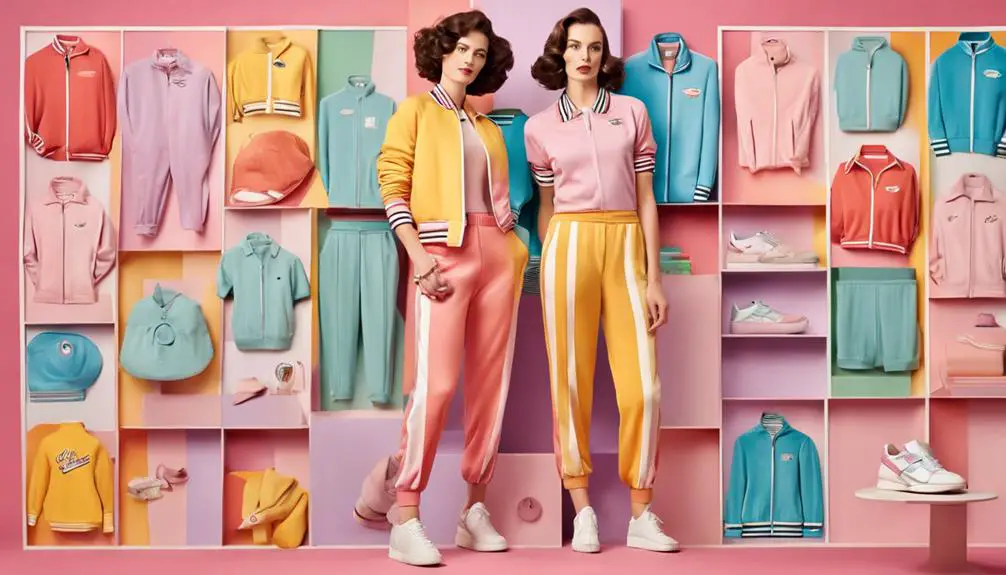
During the 1950s, a surge in women's participation in sports and fitness led to the rise of stylish and functional tracksuits. You might be wondering what made these tracksuits so popular, right? Here are three reasons:
- Bold Designs: The tracksuits often featured vibrant colors and unique patterns that caught everyone's eye, reminiscent of the design evolution seen in later decades.
- Comfortable Fabrics: Made from lightweight materials like nylon, these suits allowed for ease of movement, perfect for any athletic activity.
- Fashion Statements: Icons like movie stars and athletes embraced tracksuits, turning them into trendy leisurewear.
Brands like Adidas and Kappa were at the forefront of this movement, creating tailored fits that flattered women's figures while still being functional. The classic tracksuit style typically included a zip-up jacket paired with loose-fitting pants, which made it easy to throw on and head out for a workout or a casual day out.
With tracksuits becoming a staple, they reflected the fashion trends of the time, emphasizing individuality and self-expression. Women were no longer just wearing baggy sweats; they were rocking stylish athletic wear that made them feel confident and empowered.
Cultural Impact on Women's Fashion
Embracing a more active lifestyle, women in the 1950s found tracksuits to be a practical choice that aligned with their evolving roles in society. As the women's liberation movement gained momentum, women began breaking free from traditional expectations, and the tracksuit became a symbol of this change. Who wouldn't want to look stylish while being comfortable, right? The rise of casual wear during this era mirrored the cultural shifts, much like the evolution seen in brands such as Billabong, which reflects a growing acceptance of functional yet fashionable clothing vintage clothing insights.
Tracksuits were designed with fitted pants and zip-up jackets, made from synthetic fabrics that offered ease of movement. Whether you were heading to a workout or just lounging around, this casual wear was versatile enough for any occasion. It wasn't just about being athletic; it was about embracing modern femininity, mixing style with functionality. You could feel empowered while rocking that tracksuit!
Pop culture played a significant role too. Movies and TV shows featured strong, athletic female characters who wore tracksuits, making them a fashionable choice. When you saw your favorite actress looking fierce in a tracksuit, it inspired you to ditch the frumpy outfits and step into something that felt both comfortable and chic.
Evolution Towards Modern Activewear
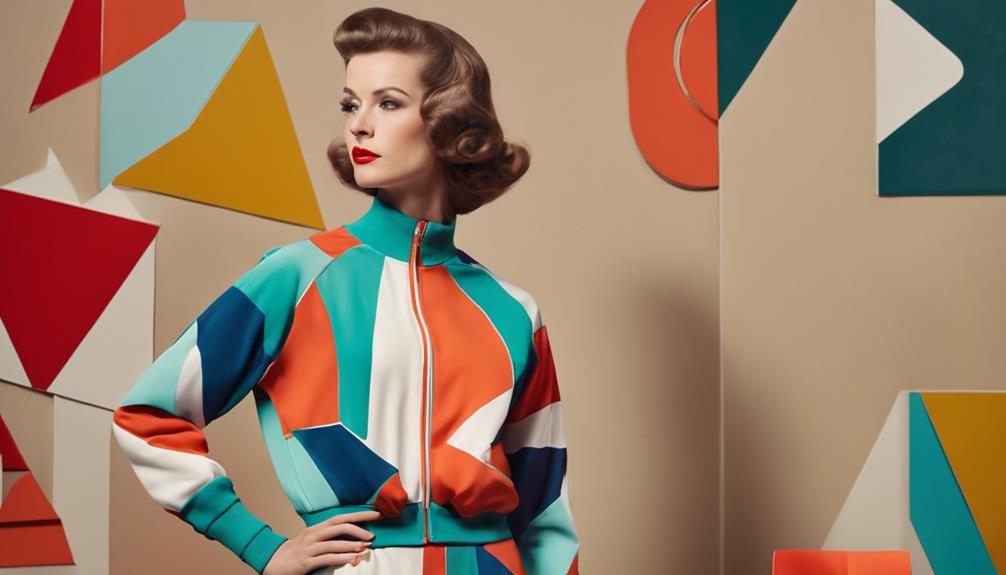
The influence of 1950s tracksuits on contemporary activewear is significant, as they marked a pivotal moment in women's fashion. Back then, tracksuits weren't just comfy outfits; they represented a shift toward an active lifestyle, showcasing how women could embrace both sportiness and elegance. This evolution is reminiscent of how vintage Nike clothing from the 70s and 80s has surged in popularity, emphasizing quality and design. Here's why that's important:
- Comfort and Flexibility: Synthetic materials like nylon and polyester allowed for movement without restriction, making it easier for women to engage in sports.
- Casual Chic: Tracksuits crossed over from the gym to everyday wear, proving that you can look good while being active.
- Empowerment: These outfits became symbols of women's empowerment, encouraging more women to embrace fitness and their bodies.
Fast forward to today, and you can see how those 1950s designs laid the groundwork for modern activewear. Today's tracksuits are all about sleek silhouettes and functional fabrics that marry performance with style. You might find yourself reaching for those trendy leggings or stylish joggers, knowing they carry the legacy of the past.
Isn't it amazing how a simple tracksuit can symbolize so much? It's not just about fashion; it's about feeling empowered to move and live your best life! So, the next time you slip into your favorite activewear, remember that you're part of a long line of women who've embraced comfort and style. Keep strutting your stuff!
Frequently Asked Questions
Were Tracksuits Popular in the 60S?
Yes, tracksuits became incredibly popular in the 60s, showcasing bold tracksuit styles that reflected cultural shifts. Athletic fashion embraced vintage trends, with popular brands launching vibrant designs, making tracksuits a staple in casual wardrobes everywhere.
How to Dress in the 1950S?
To dress in the 1950s, embrace vintage fashion with iconic silhouettes. Choose fitted dresses or casual wear, incorporating fabric choices like cotton. Mix elegance with athletic style for a balanced, stylish look that reflects the era.
Did Girls Wear Jeans in the 1950S?
You'll find that girls didn't widely wear jeans in the 1950s. Although denim trends emerged, teenage fashion leaned towards dresses. Cultural shifts later accepted jeans as casual wear, paving the way for future styles.
Which Designer Defined Women's Fashion in the 1950S?
In the 1950s, you'd see designer influences from icons like Christian Dior and Coco Chanel. Their textile trends transformed women's fashion, blending elegance with athletic wear, reflecting cultural shifts towards comfort and casual style.
